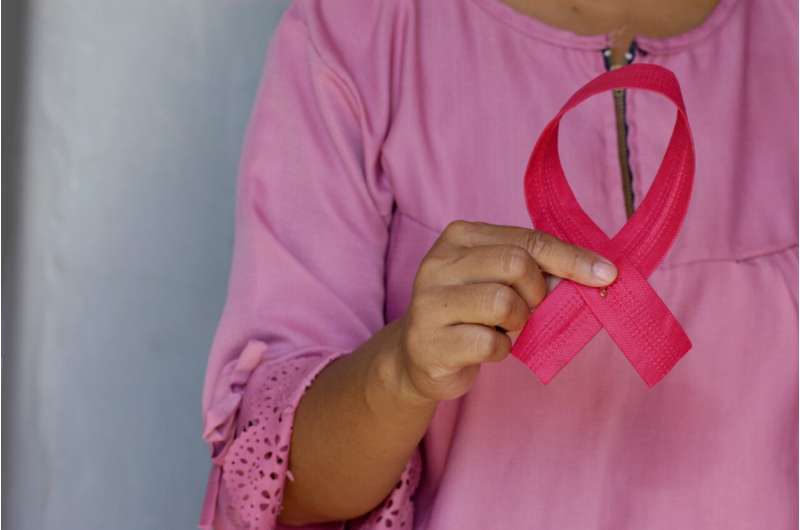This article has been reviewed according to Science X's editorial process and policies. Editors have highlighted the following attributes while ensuring the content's credibility:
fact-checked
peer-reviewed publication
trusted source
proofread
Assessing breast cancer risk

The genetic risk of breast cancer has been in the news lately. Researchers at the Mayo Clinic Comprehensive Cancer Center are working toward pinpointing individuals' risk of developing breast cancer.
The discovery of the BRCA1 and BRCA2 genes in the 1990s enabled many women to learn they are at high risk of developing breast cancer. More than a dozen other breast cancer genes have been identified since, but the risks associated with them have been far less certain.
Research from Mayo Clinic has filled critical gaps in the understanding of how these genes predispose women to disease.
Breast cancer is typically broken down into four major molecular subtypes—triple-negative, HER2-positive, luminal A and luminal B—each with different degrees of aggressiveness and responses to treatment. Through an industry collaboration with a genetic testing company, Mayo Clinic researchers analyzed testing results from nearly 55,000 breast cancer patients and found that different breast cancer genes appear to drive each of the different subtypes.
In 2021, Mayo Clinic researchers and nearly 60 other researchers published a seminal study in the New England Journal of Medicine that provided more accurate risk estimates for 28 different breast cancer genes and found that 16 of the 28 genes previously thought to play a role in breast cancer did not increase a woman's risk of disease.
Women newly diagnosed with cancer in one breast often want to know the chances that the disease will spread to the other breast or to other parts of the body.
Using data from the Cancer Risk Estimates Related to Susceptibility (CARRIERS) consortium, Mayo Clinic researchers determined the risks that women carrying different germline genetic mutations had of developing cancer in both breasts, known as contralateral breast cancer. For example, they found that carriers of ATM mutations did not have a significantly elevated risk of contralateral breast cancer, whereas those with BRCA1, BRCA2 and CHEK2 mutations had double the risk.


















